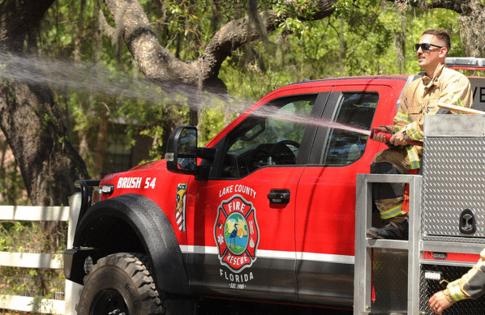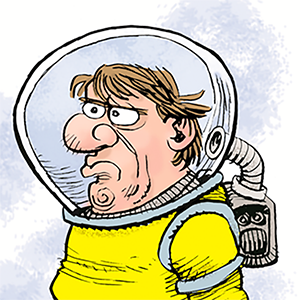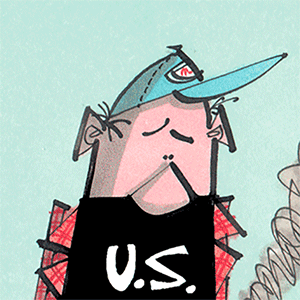Central Florida faces growing fire threat with deepening drought
Published in News & Features
ORLANDO, Fla. — With an intensifying drought anticipated to last at least through mid-May, the Central Florida region faces a serious threat for destructive wildfires that can spark quickly and spread rapidly, meteorologists and emergency officials said.
“One of the things that is concerning to us is that there are still a lot of downed trees (in wooded areas) from last year’s hurricanes,” said Chief David Kilbury, public safety director for Lake County. “That is a tremendous fuel load. …. And some of those are pine trees have sap and oils that can ignite quickly.”
The lack of significant rainfall this year — combined with the recent toasty temperatures and breezy days that dry out vegetation — led Seminole, Orange and Volusia counties to issue burn bans this week prohibiting the lighting of open fires outdoors — including bonfires, campfires and the burning of yard debris. Lake County had already done so.
According to the U.S. Department of Agriculture’s Drought Monitor, much of Central Florida is under moderate drought conditions — including Seminole and most of Orange and southern Lake counties — but stretches of north Lake and mid-Volusia counties are experiencing a severe drought.
In South Florida, several counties — including Collier, Glades, Hendry and Palm Beach — have “extreme drought” conditions for the first time since 2011, according to the monitor.
Conditions in Central Florida could become more dire, as little to no rain is forecast for well into May, said Robert Haley, a meteorologist with the National Weather Service in Melbourne.
And even one heavy downpour “wouldn’t put a dent” in the drought, Haley pointed out. He added that enough rain is not likely until early June when the usual rounds of afternoon thunderstorms is expected to begin.
Florida counties automatically activate burn bans whenever the Keetch-Byram Drought Index — a scale that measures the dryness of the soil — reaches or exceeds 500.
In Central Florida on Thursday, Lake County had the driest measurement at 559, followed by Volusia at 525, Orange at 505, and Seminole at 504. Osceola measured 433 and has not yet enacted a burn ban.
On Friday, there were 86 active wildfires burning 3,092 acres across Florida — including two in Osceola and four in Lake, according to the Florida Forest Service.
To prepare for more, Central Florida fire departments have started moving heavy equipment and personnel into areas that are heavily wooded or have a lot of debris that can ignite quickly.
In Seminole, where nearly one-third of the county is mostly rural, large trucks that can easily drive into areas with thick brush are in position, along with additional firefighters, said Doreen Overstreet, a spokeswoman for the county’s fire department.
“We’re definitely on an elevated response,” she said. “If we get a brush fire or illegal burn, we have more units ready to respond.”
In Orange, Fire Marshal William Farhat said “it’s constant management every day” for his crews by watching the winds and temperatures.
Under county burn bans, residents are allowed to use charcoal, gas and electric grills outdoors, as long as they are not near wooded areas.
But Farhat urged residents to be extra cautious if grilling outdoors. He advised dousing used charcoal with water and putting it in metal containers. Drivers should avoid parking their vehicles on lawns.
“The exhaust and the catalytic converter can easily start a grass fire,” Farhat said. “It’s so dry that it doesn’t take much to start a fire.”
How dry is it? As of Friday, the Orlando area had received only 0.37 inches of rain in April. That’s one inch less than the normal 1.37 inches. For 2025, the Orlando area has received a total of about 5 inches of rain through Friday, roughly half of the normal 10.07 inches.
The dry conditions are mostly a result of La Niña, an intermittent cooling of the warmer waters of the Pacific Ocean, which leads to more rain in the mid-Atlantic states but tends to dry out the southeastern United States during the winter and early spring months.
But the good news: La Niña began to wind down this week, and the region is transitioning to more neutral conditions, Haley said.
“But it will take some time for those global wind patterns to change” and bring more rain to Florida, he said.
In 1998, La Niña season caused such severe drought conditions that it led to the so-called Florida Firestorm. Long stretches of Interstate 95 were closed as widespread wildfires burned hundreds of structures and canceled sporting events and Fourth of July celebrations across the region.
“The key is prevention,” Farhat said, urging residents to clean debris around their homes and water their lawns. “People would be surprised at how quickly a fire can light and how fast the flames can spread.”
©2025 Orlando Sentinel. Visit orlandosentinel.com. Distributed by Tribune Content Agency, LLC.







Comments